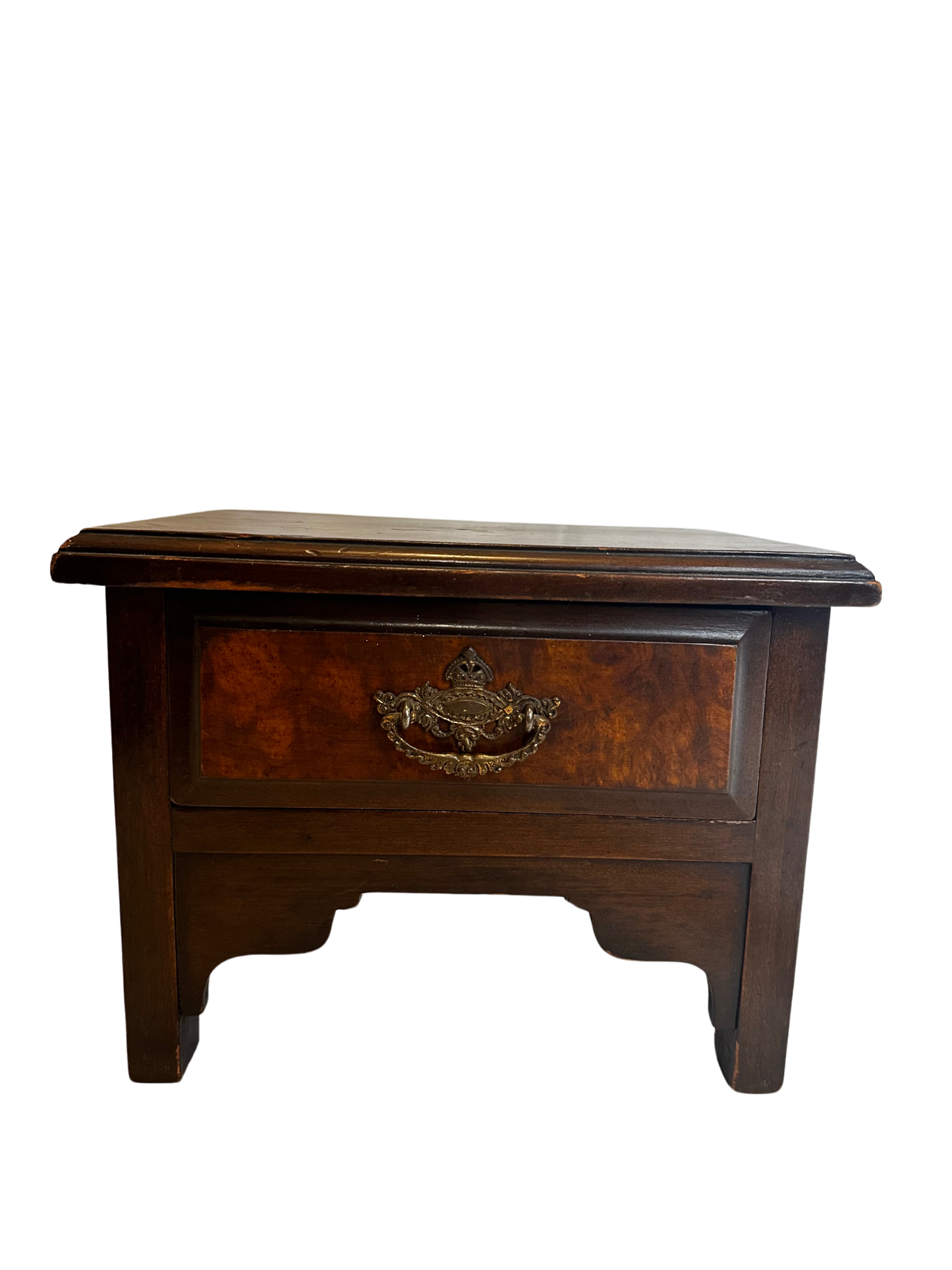Vintage Nightstand Salesman Sample
Vintage Nightstand Salesman Sample
No se pudo cargar la disponibilidad de retiro
Compartir







Salesman Sample Nightstand with One Pull Out Drawer.
Includes dovetail joinery on the drawer.
Estimated to be Vintage circa 1930s.
Salesman Sample Nightstand with One Pull Out Drawer.
Includes dovetail joinery on the drawer.
Estimated to be Vintage circa 1930s.
10.5"w x 8"d x 7.25"h
10.5"w x 8"d x 7.25"h
Salesman samples have a rich history, particularly in the late 19th and early 20th centuries, when they were widely used as marketing tools. These miniature versions of full-sized products allowed traveling salesmen to demonstrate their wares without the need to transport heavy or cumbersome items.
The concept of scaled-down models dates back centuries, but salesman samples became particularly prominent in the 19th century, when industrialization led to mass production and competition among manufacturers. Early examples were often handmade, crafted with the same materials and precision as their full-sized counterparts to accurately represent the product’s quality.
By the late 1800s, salesman samples became widely used across industries, from furniture and agricultural equipment to stoves, sewing machines, and even wagons. These miniatures were used by door-to-door salesmen, traveling sales agents, and at trade shows to give potential buyers a hands-on look at the product’s design and functionality. Many companies created custom carrying cases to transport their samples safely, and some even provided detailed brochures or catalogs alongside the models.
The need for salesman samples began to decline in the mid-20th century with the rise of printed advertisements, photography, and later, television commercials. However, today, salesman samples are highly collectible.
Salesman samples have a rich history, particularly in the late 19th and early 20th centuries, when they were widely used as marketing tools. These miniature versions of full-sized products allowed traveling salesmen to demonstrate their wares without the need to transport heavy or cumbersome items.
The concept of scaled-down models dates back centuries, but salesman samples became particularly prominent in the 19th century, when industrialization led to mass production and competition among manufacturers. Early examples were often handmade, crafted with the same materials and precision as their full-sized counterparts to accurately represent the product’s quality.
By the late 1800s, salesman samples became widely used across industries, from furniture and agricultural equipment to stoves, sewing machines, and even wagons. These miniatures were used by door-to-door salesmen, traveling sales agents, and at trade shows to give potential buyers a hands-on look at the product’s design and functionality. Many companies created custom carrying cases to transport their samples safely, and some even provided detailed brochures or catalogs alongside the models.
The need for salesman samples began to decline in the mid-20th century with the rise of printed advertisements, photography, and later, television commercials. However, today, salesman samples are highly collectible.
1930s - 1950s
1930s - 1950s
Wood and Brass
Wood and Brass
Houston, TX
Houston, TX
Some slight scuffing to the wood as denoted in the pictures.
Some slight scuffing to the wood as denoted in the pictures.








